
Бесплатный фрагмент - Circular economy in action: Regional adaptation of global strategies
The case of Georgia
Introduction
Economic and ecological challenges of the modern world are forcing traditional approaches to be reconsidered with regard to production and consumption. Contemporary realities urge scientists, economists, and policy makers to seek solutions that could guarantee long-term sustainability of economic systems at an appropriate standard of living for current and future generations. During the last few centuries, the linear economy has been the dominant model of economic activity and is based on the principle “take-make-dispose”.
Historically, the linear economy appeared during the Industrial Revolution when mass production and consumption became the foundation of economic growth. In a time when natural resources were abundant and the costs of their extraction and processing were relatively low, the “take-make-dispose” model was advantageous and convenient for economically developed countries. The main objective was to increase the volumes of production, while the environmental consequences remained on the periphery for a long time. With the increase in population size, urbanization, and standards of living, production and consumption started to reach scales whereby the negative impacts of a linear economy manifested themselves in pollution, waste accumulation, and resource depletion. Although the linear model favored economic growth and the improvement of the quality of life, its shortcomings started to be realized during the second half of the 20th century. It has been proved to be unsustainable since it did not consider finiteness in resources, nor does it provide for waste management or any method to reduce the environmental impact. In the present scenario, a linear economy cannot provide sustainable economic growth in the present scenario without considerable environmental and health hazards.
In recent decades, a linear economy has been at the core of serious environmental problems such as resource depletion, waste accumulation, and pollution. The impact is now reaching such a critical level on the planet that a transition is urgently required toward new, more environmentally sustainable models of production and consumption. The World Economic Forum and PwC estimate that almost half of the world economy, which accounts for about $44 trillion every year, relies on the state of the environment. While in 2018, 63% of mineral extraction was replaced through the discovery of new deposits, this figure fell to 32% in 2020, thus indicating the depletion of mineral resources. Further, billions of tons of waste are emitted into the environment annually, which is causing considerable effects. Frequency and intensity of natural disasters increase every year, causing large-scale economic losses and human casualties (fig.1).
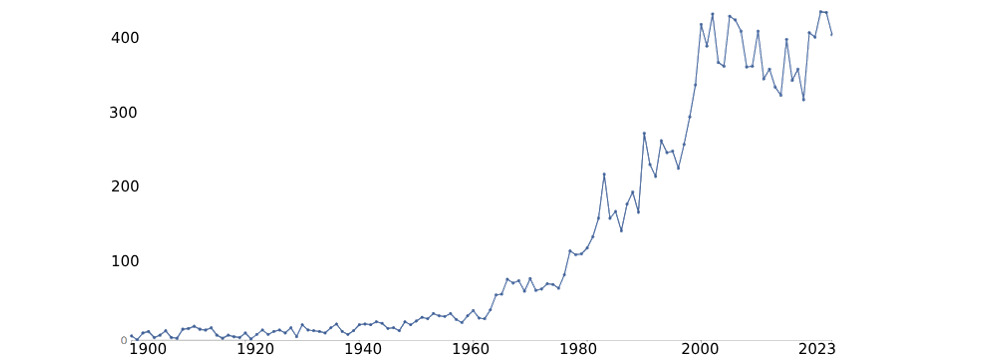
Figure 1. Number of registered natural disasters worldwide [1]
It can be witnessed that extreme weather events are intensifying and becoming more frequent, including hurricanes, floods, droughts, and wildfires. One of the driving processes is climate change, and that is greatly human-made through human activities, especially by the emission of greenhouse gases. According to the International Energy Agency (IEA), global CO2 emissions from the energy sector increased by 1,1% in 2023, rising by 410 million tons and reaching a new record level of 37,4 Gt. Its structure continues to evolve. Total CO2 emissions in China exceeded in 2023 that of developed economies by 15% (fig.2).
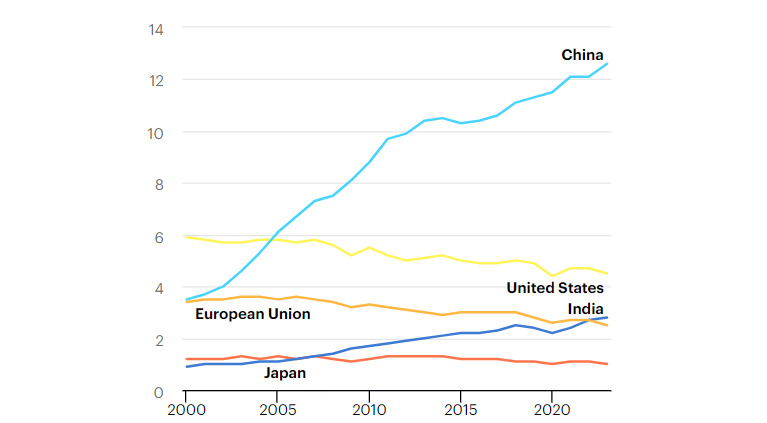
Figure 2. Total CO2 emissions by region, 2000—2023, Gt [2]
According to the latest report from the Intergovernmental Panel on Climate Change (IPCC), since 1880, the global temperature has risen about 1,1°C [3]. It was linked with human activities, especially burning fossil fuels and deforestation. If greenhouse gas emissions are not reduced, this temperature may increase by another 2,7°C by 2100, which will lead to disastrous consequences: sea-level rise, ecosystem destruction, and an increase in extreme weather conditions.
One of the promising solutions for emerging environmental and climate issues is the so-called circular economy (CE), which is one system that aims at maximum resource use with minimum waste (fig.3).

Figure 3. CE diagram
The concept of the CE is thus that of a closed loop: resources are used several times, and products, when their life cycle is over, are not wasted but recycled and reintroduced into the economic cycle [4]. Unlike the linear model, the CE assumes that materials can be used indefinitely, achieved through extending product life cycles, reusing components, and recycling materials. Transitioning to such a model requires deep transformations across all aspects of economic activity: from product design and production processes to consumer preferences. Moreover, the CE creates conditions for sustainable development by conserving resources for future generations, reducing environmental impact, and increasing economic efficiency through reduced raw material and energy costs.
The aim of this research paper is to conduct a comprehensive examination of the potential of the CE to contribute to sustainable development. It is important to assess how effectively this model will work for different countries and regions, as well as to explore how the principles of CE can be adapted and implemented in countries of different economic development levels. Further research involves three groups of countries, namely: developed economies including but not limited to the USA, European Union (EU) nations, Australia, Canada, Andorra, South Korea, and Japan; the group of emerging economies such as Russia, Georgia, Asian countries like China, Kazakhstan, Uzbekistan, Indonesia, Latin American countries, and underdeveloped regions like Haiti, Rwanda, where the application of this model faces certain unique challenges. The authors also seek to determine not only the potential benefits of CE for sustainable development but also problems and barriers to its implementation in countries with varied economic, social, and cultural characteristics.
The methodology of the study will be based on a comparative analysis of successful examples of the implementation of CE in different countries, the aggregation of data on key economic and environmental indicators, as well as an examination of legislative and regulatory initiatives. A big part of the research will be presented in the form of a critical analysis of academic works, discussing both the theoretical grounds of the CE and practical examples of its application. Among the scholars relied upon in this research are Walter R. Stahel, Michael Braungart, and Ken Webster. Their works have contributed to the formation of the CE concept and the development of strategies for its implementation that address contemporary challenges and economic needs. Moreover, the research applies methods of analysis of legislative initiatives and programs for the support of CE, statistical and empirical data regarding the effects of CE on macroeconomic and social parameters such as Gross Domestic Product (GDP), employment, investments, environmental security, and quality of life. The comprehensive approach integrates data analysis with the critical reflection of scholarly works and allows seeing not only the understanding of the potential of CE but also the assessment of its significance for different countries and economic systems.
The CE represents an innovative approach, fundamentally different from the traditional linear model that underpinned industrial society. At its core, CE is based on principles that aim to use resources as efficiently as possible, minimize waste, and reduce environmental impact. One of the central principles of CE is designing products in such a way that their components can be easily recycled and reused. This calls for a different approach that considers not just the efficiency of the product in its use phase but also its disposability and recyclability after the end of its life. Walter R. Stahel [5—7] underlines that it is high time to move toward a “productive economy” in which the emphasis is shifting from volumes of production to the rational use of resources. This approach enables cost minimization and reduces environmental impact.
Another important principle is the “cradle-to-cradle” concept proposed by Michael Braungart and William McDonough [8], which aims at creating products that can be completely recycled and returned for production. This is a closed-loop principle that forms the basis for sustainable manufacturing and removes waste entirely from the economy.
Transitioning to the CE is not only an economic necessity but also an environmental one. The resource scarcity incidents, from water to rare earth metals and fossil fuels, are driving up their costs, posing serious questions regarding the sustaining of the global economy. Economies still persisting with the linear model continue to suffer from rising material costs and increased waste management and ecosystem restoration costs. In this context, CE solutions allow for more rational use of resources, reduction in emissions, and minimized environmental harm. Ken Webster’s work [9—11] points out that CE is a tool that would definitely help achieve sustainable economic growth because it reduces dependence on imported resources, minimizes environmental impact, and stimulates innovation. On a macro level, CE enhances economic stability by reusing resources and reducing disposal costs. On a micro level, companies can establish an optimal production process, reduce expenses, and ensure a more sustainable business model with a focus on long-term profitability.
The transition prospects of countries towards a CE can be highly different in countries at different levels of economic development. The classification of countries according to their development level was proposed and formalized in 1989 by international organizations like the World Bank, the International Monetary Fund, and the Organization for Economic Co-operation and Development. This classification is performed according to Gross National Income per capita.
Originally, the classification was established in the mid-20th century when, after World War II, there arose a need to systematize the economic differences between countries to organize international aid and foster economic cooperation (fig. 4).
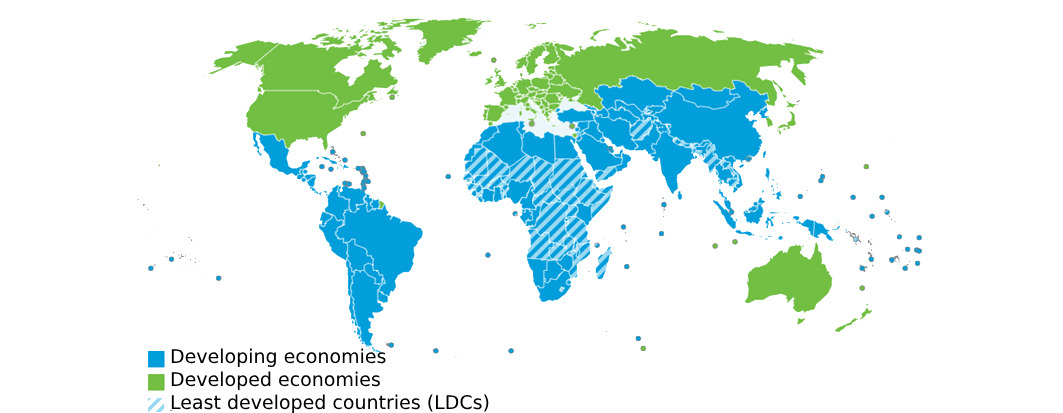
Figure 4. World by development status [12]
Developed countries, also known as high-income countries, include those that have the highest GDP per capita with a stable economic growth and advanced industrial and social infrastructure. They also enjoy a very high quality of life. The financial and institutional systems are highly developed, innovation and investment in new technologies is very active, and poverty and unemployment are relatively low. Besides, they have high standards of education, healthcare, and social services, which contribute to overall stability and resilience. Examples of developed countries include the USA, Germany, Japan, Canada, and Australia. Many developed countries are members of the Organization for Economic Co-operation and Development, founded in 1961 for the purpose of fostering economic development and the exchange of experiences among high-income nations.
The second group consists of developing countries, or countries with middle-income economies. These countries exhibit lower economic indicators compared to developed countries but show consistent economic growth. They face challenges such as poverty, income inequality, limited access to education and healthcare, as well as infrastructure deficits, which hinder further development. However, countries like Russia, Georgia, China, and Brazil, through industrialization and export activities, demonstrate improved economic indicators and are gradually transitioning towards higher-income levels.
The third group is the least developed countries, which are also known as low-income or underdeveloped countries. In these countries, there are severe social and economic problems, including low per capita GDP, underdeveloped infrastructure, high poverty, and limited availability of basic social services. Quite often, unemployment is high and educational and health facilities scarce, thus inhibiting the growth of human capital, which in turn tampers with economic stability. Examples include most sub-Saharan African countries, including Haiti and Rwanda.
In a developed country, the state level supports transitioning to circular models, actively encouraging this transition by legislative initiatives and investments in sustainable technologies. For example, in the Netherlands, CE has been recognized as a national strategy; the government has announced plans for complete implementation of CE principles by 2050. Japan also has advanced recycling and reuse technologies that help reduce waste flow and minimize environmental impact. These countries are the ones with substantial development of infrastructure, financial, and technological resources to realize circular projects at all levels of the economy.
At the same time, developing countries are also trying to include elements of the CE in their economies, although this is more difficult to do because of a number of obstacles. For instance, in Russia, the government actively supports waste disposal and recycling programs, which help reduce environmental impact and create new jobs. In Georgia, the transition to CE is supported by international funds and organizations, which undertake different measures of decreasing pollution and waste recycling. In this respect, international cooperation and access to financial resources through the World Bank and the United Nations (UN) are important for such countries to facilitate a shift toward circular models. Brazil also pays considerable attention to the integration of circular approaches into agriculture and to the recycling of plastic waste. However, complete transitioning to circular principles needs more general dissemination of knowledge and technologies, government support, and changes in legislation.
The least developed countries, especially in most regions of Africa, provide the most challenges when implementing the principles of the CE. Minimal financial resources, poor infrastructure, and heavy dependency on natural resource exports are obstacles to their transition toward closed-loop material cycles. On top of it all, these countries face other global concerns: poverty, food shortage, and limited access to basic services make the adjustment of circular practices even more difficult. The attempts at integrating the CE are further contested by resource competition and the attention that needs to be given to urgent humanitarian issues. However, the CE could still be of benefit for such countries in the form of more efficient use of local resources, a reduction in dependence on imports, and easing the environmental burden. Yet, it needs immense support from the international community through finance, expertise, and education programs to train local specialists and create the necessary recycling infrastructure. The involvement in the global CE may unlock opportunities for low-income countries in exporting recycled materials and improving economic conditions. However, this requires long-term, comprehensive efforts that not only aim at creating environmentally sustainable production processes but also address more fundamental social and economic problems.
Chapter 1. CE in developed countries
The concept of CE is gaining increasing significance in developed economies as they face challenges such as resource depletion, waste accumulation, and growing environmental concerns. The objective of this section is to understand CE through examples given by leading countries in this sphere, which have huge experience in the elaboration and implementation of sustainable economic models. Examples include the USA, EU member states, Australia, Canada, Andorra, South Korea, and Japan-all of which actively develop and promote circular principles through various government programs, legislative initiatives, and corporate strategies. The review of successful strategies shows how CE contributes to resilience enhancement and competitiveness at both the national and global market level.
These countries have realized that a transition to the CE can help improve resource scarcity, economic growth, reduced environmental impact, and uncover new economic avenues. For example, ambitious EU targets for recycling, waste reduction, and sustainable production are driving significant changes in EU industries from construction and manufacturing to consumer goods. The advance in the recycling system of Japan, fully encompassing all that waste management is, illustrates that a country has integrated circulatory into the national strategies toward reduction of ecological footprints, raising the bar in sustainability. Indeed, these examples prove that CE works in real life and therefore can become one of the ways of economic strengthening. It creates new jobs, develops an innovative technology and service sector, and ensures the long run of industries by making them independent from raw materials and energy.
As these countries keep emerging at the forefront in circular practices, their experiences provide useful lessons and frameworks for other emerging economies seeking to adopt similar models for sustainable development.
1.1. The USA
The concept of the CE in the USA is of growing importance in the context of sustainable development and rational use of resources. In recent years, there has been a marked intensification of efforts at both the federal and regional levels aimed at integrating CE principles across various sectors of the economy.
Within the USA, environmental concerns have remained one of the most critical domains of governmental policy and public interest over the past several decades. With the country ranking as the third-largest globally by both land area and population, the USA is also the world’s largest economy, with a gross domestic product of just under $29 trillion in 2024. This scale of economic activity exerts substantial pressure on natural resources and the environment (fig.5).
The evolution of the principles of CE first began in the USA as an increasing awareness of conserving natural resources and waste was evoked, largely inspired by the environmental movements of the 1960s and 1970s. In this age, societal concerns about industrialization’s environmental toll grew afresh, catalyzed by publications like Rachel Carson’s Silent Spring (1962), unveiling the devastating impact of chemical pollutants on ecosystems [14]. These developments fueled public demand for action, prompting the USA government to establish the Environmental Protection Agency (EPA) in 1970 and introduce foundational environmental regulations. While the CE concept was not yet fully articulated, these early efforts set the stage for key practices such as recycling and resource reuse, which later became pillars of circular economic systems [15].
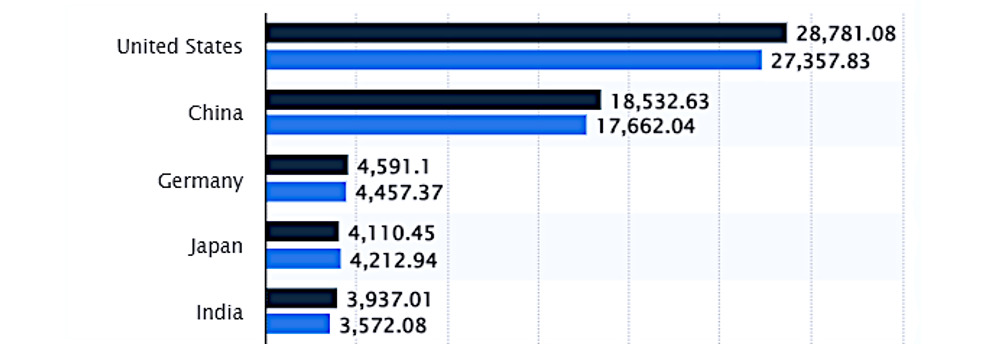
Figure 5. GDP levels in various countries in 2023 and 2024 [13]
Initial steps toward the incorporation of CE principles in the USA began in the 1980s and 1990s. During this period, there was much progress with recycling technologies and integrated waste management legislation. Notably, California’s Integrated Waste Management Act of 1991 required municipalities to recycle at least 25% of their waste by 1995 and 50% by 2000 [16]. These efforts thus provided a foundation for the development of recycling infrastructure and the more general diffusion of material reuse practices. Similarly, the 1994 Packaging Act mandated federal rules on the recycling and disposal of packaging materials. It marked one of the key policy shifts toward creating closed-loop systems, considering the large contribution made by packaging waste.
Starting in the early 2000s, a rash of research and innovation consistent with a CE paradigm spread through the USA. Walter R. Stahel became a key pioneer in the field, and his calls to extend product lifetimes through a “performance economy” impacted American approaches to sustainable development. Around this time, organizations like the Ellen MacArthur Foundation supported the cradle-to-cradle concept, put together by Michael Braungart and William McDonough [17]. These frameworks soon found acceptance throughout the USA and inspired the adoption of novel business models and strategies for product design focused on resource circularity, sustainable material use, and waste minimization.
In the last decade, the CE has, among others, been enjoying great interest at both the governmental and corporate levels in the USA. In the year 2018, EPA issued a Strategic Plan for Sustainable Materials Management that placed at the core of the document a presentation of the principles of circular economics. It had aimed at fiscal years 2018—2022, trying to reduce environmental impacts and enhance economic efficiency through more rational resource use at the same time [18]. CE and efficient use of materials, according to this document, have been identified as fundamental items within the agency’s agenda; the main objective has to do with mitigating environmental risks while enhancing economic performance through the use of responsible consumption and resources. EPA’s strategy was focused on shifting from a linear consumption model to a closed-loop system, which would involve waste minimization, recycling, and incorporation of the reuse and conservation of resources into processes of production and consumption.
The plan outlined three main areas of focus: protection of health and the environment, forming partnerships with public and private organizations for environmental goals, and enforcement of compliance with legislative standards with increased transparency. These focus areas included concrete measures, such as reducing the use of landfills, improving air and water quality, enhancing recycling infrastructure, and increasing the share of secondary materials in use. In this way, accelerating the transition toward CE was underpinned by partnerships with government entities, local communities, and businesses in ways that helped spread practices of recycling and the adoption of new models for resource utilization in order to reduce environmental burdens.
According to the EPA’s report, by 2018, 74% of the established targets for air and water quality were achieved [19]. Of the 92 goals, 68 were fully met, while 15% were achieved at 75—99%. Problematic metrics in air quality and chemical management were identified as areas needing further improvement. The EPA successfully streamlined hazardous waste disposal permits, reducing the backlog by 18%, achieving 136 pending permits by mid-2018. This development lessened the administrative burden and added more transparency to waste movement and processing.
The plan particularly focused on packaging wastes, which form a big fraction of municipal solid wastes (MSW) in the USA. These included strategies aimed at reducing the quantity of packaging, and advocating for the recycling of packaging material to lighten the landfills and reduce costs of managing waste. Thus, in 2018, under the Superfund program of EPA, 102 sites were completely cleaned up and 1,368 properties made available for reuse due to environmental progress in cleanups, and rehabilitation of contaminated areas.
A new strategic plan, 2022—2026, has been adopted in 2022, laying down the key objectives of the USA EPA [20]. Among the major objectives of this plan, greenhouse gas emissions reduction occupies the frontline. The agency will issue final rules by September 2026 to cut emissions from light-duty vehicles, medium- and heavy-duty trucks, power plants, and the oil and gas industry. According to an estimate, the climate partnership programs included under the plan will yield an annual reduction of 545 million metric tons of CO₂ equivalent emissions. The plan also gives much emphasis to climate adaptation, where EPA commits to assisting at least 450 federal, state, and local governments in improving resiliency to the effects of climate change. Finally, the plan proposes to reduce HFC use by 10% from the baseline levels under the AIM Act by September 2023. Other key elements of the new strategic plan include incorporating principles of equity and fairness into environmental programs and actions, as well as enhancing partnerships with federal, local, and international stakeholders.
Most of the country’s territory is occupied by industrial and agricultural zones and densely populated urban agglomerations that produce huge volumes of waste and pollutant emissions. The rate of waste recycling is the most important indicator of environmental sustainability for a country. According to data [21] presented in the EPI, the 2024 recycling rate for the USA is 44 while Switzerland attained the highest EPI score of 100.The EPI metric for recycling reflects the percentage of waste processed and reintegrated into production cycles. It illustrates how efficiently a country manages its resources and incorporates circular principles into its economy. In 2022, the recycling rate in the USA was recorded at 14,8, while South Korea achieved the highest score of 67,1.
The 2024 fiscal year report from the USA EPA highlights substantial financial allocations aimed at advancing the CE and promoting sustainable resource management [22]. For instance, the total budget for the “Clean Water” program (State Revolving Fund, SRF) amounted to $6,4 billion. This funding includes both regular appropriations and allocations provided under the Infrastructure Investment and Jobs Act. The program focuses on modernizing water supply systems and wastewater treatment facilities, which reduces environmental strain and expands access to clean water for the population. A significant portion of these funds is distributed as revolving loans, enabling states to finance new projects aimed at improving water infrastructure.
Approximately $1,4 billion was allocated to research activities assessing risks to human health and ecosystems. These funds support the development of regulatory standards, such as those for drinking water quality and the protection of vulnerable communities. This research facilitates the integration of CE principles into environmental policy, minimizing negative impacts on the environment and human health.
Research institutions like the Massachusetts Institute of Technology (MIT) are the most crucial to the development of CE in the USA. In 2023, MIT initiated a research program that focused on the development of new materials and technologies that would accelerate the process of adopting CE practices. Such scientific activities are creating a fertile ground for corporate and governmental initiatives and raising public awareness about the urgent need for sustainable development.
Superfund programs, aimed at restoring contaminated sites and facilitating their reclamation, received approximately $1,6 billion in funding. These resources are allocated to land decontamination, improving land quality, and preparing sites for reuse, aligning with key principles of the CE. Such investments enhance the availability of previously polluted sites for public and commercial purposes, reducing the need to develop new land areas.
Overall, these measures reflect a strong commitment to advancing the CE by supporting infrastructure projects, fostering scientific research, and rehabilitating environmentally vulnerable areas. The funding also underscores the integration of sustainability principles into federal resource management policies.
To date, California remains one of the leaders in sustainable development and the implementation of CE principles in the USA [23]. For instance, in 2022, the state passed Senate Bill 54 (SB 54), which mandates that all packaging within California must be recyclable or compostable by 2032 (fig.6).
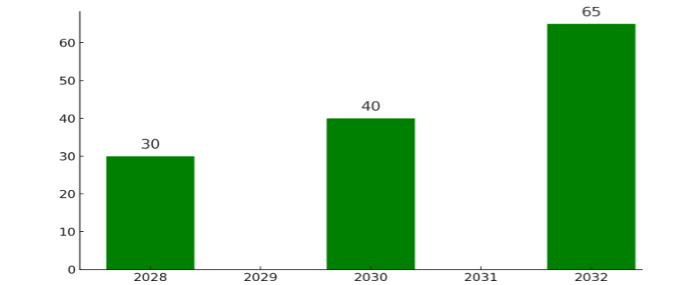
Figure 6. Plan to increase the recycling rate of plastic packaging in California, %
The premise for adopting the law was a global study conducted in 2018 [24], which found that only 9% of plastic is actually recycled, while 91% remains waste on land and in oceans.
Various American companies have implemented the working principles of the CE, promoting efficient resource use and the minimization of environmental impact. Google, among other companies, has embraced this concept and implemented measures related to the minimization of waste, utilization of recycled materials, and enhancement of energy efficiency. In 2023, the company reached the following significant marks in its work related to environmental protection. Starting this year, all new products contained a minimum of 99% post-consumer recycled plastic in product packaging, which is an uptick from 96% in 2022 [25]. The company made 34% of materials used in its products, again from recycled sources, lower than 41% made during the last year due to a change in the product lineup.
One of the important goals for Google is “Zero Waste to Landfill”. In 2023, the company could implement this goal on 29% of its data center campuses, translating to 8 out of 28 global facilities. This represents significant efforts made by Google in terms of handling better waste management and reducing pressure on the environment.
Equally important, Google is also heavily investing in renewable energy (RE). In 2023, 64% of the company’s consumption of energy was from clean sources. Besides this, Google inked contracts for an additional 4 GW of RE capacity-a record in its green energy developments. These feats put into light how Google embeds sustainability principles in all of its operations and products to reduce its environmental footprint.
Another example of successfully implementing CE principles in the USA is the work of Procter & Gamble Co. (P&G). The company actively focuses on reducing environmental impact by optimizing packaging and minimizing the use of virgin resources. As part of its strategy, P&G bases its decisions on scientific data and comprehensive life cycle analyses of materials, enabling it to minimize the environmental footprint of its products. One of P&G’s primary goals is to ensure that 100% of its consumer packaging is either recyclable or reusable by 2030, with the company having already achieved a 78% recyclability rate by the end of 2023 [26]. Additionally, P&G aims to cut its use of virgin petroleum-based plastic in packaging by 50% by 2030, with a 13% reduction already achieved by 2023.
The company is also a strong supporter of Extended Producer Responsibility (EPR) systems, which accelerate the transition to a CE and enhance waste recycling processes. Since 2020, P&G has consistently met its target of sending zero manufacturing waste to landfills (fig.7).
The company also participates in global initiatives, such as support for the UN treaty aimed at combating plastic pollution, as a manifestation of its commitment to global environmental objectives. These actions by P&G contribute to creating a closed-loop system of resource use, reducing environmental impact, and promoting the principles of sustainable development.
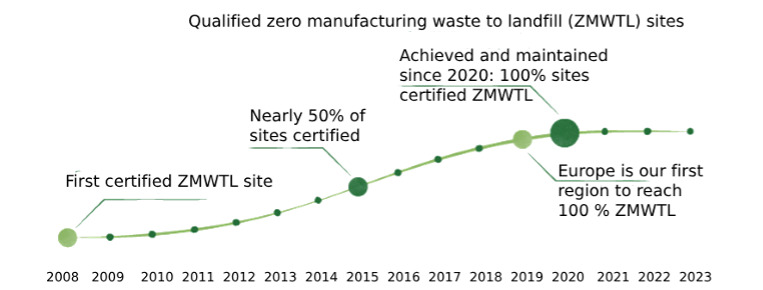
Figure 7. Qualified manufacturing waste to landfill (ZMWTL) sites
On the whole, in the USA, important steps have been taken regarding the promotion of the CE principles, mainly on the level of individual states and major corporations. However, such a model faces a number of challenges. First of all, there is an urgent need to modernize the recycling infrastructure, which still does not cover many parts of the country, especially rural and remote areas. Second, the absence of harmonized federal standards makes it very complicated to implement CE policies throughout the whole country. Third, the high-value segment of USA market products, such as packaging materials and electronics, needs advanced technologies for recycling, which can hardly allow the closed material loops to be established.
While these challenges are still at play, the outlook for the CE development in the USA remains promising. In 2023, the EPA reported that the recycling industry already supports over 680,000 jobs and contributes approximately $37,8 billion to the economy. This emphasizes the fact that the CE provides not only environmental but also major economic benefits. If current trends continue, the USA is well positioned to become one of the global leaders in CE practices that would let it meet the challenges of environmental and economic sustainability in the long term.
However, it is worth noting that a landmark event for the global community is the renewed decision of the USA to withdraw from the Paris Agreement on climate change, once again highlighting the instability of international environmental commitments by major powers. This has happened before: in 2017, the administration of Donald Trump notified the UN of its intention to leave the agreement, and the USA formally exited in 2020. However, in 2021, President Joe Biden rejoined the accord, reinstating the country’s commitment to reducing emissions. Now, in 2025, the USA has once again announced its intention to withdraw, notifying the UN that the exit will take effect in 2026. This move has raised serious concerns among world leaders and climate organizations, as it undermines collective efforts to combat global warming, weakens international climate policy, and sets a precedent for other countries, potentially making it more difficult to achieve the goal of limiting temperature rise to 1,5°C.
1.2. Developed countries of the EU
The development of the CE in EU countries depends on a combination of environmental, economic, and social factors. In the first place, transition to the CE is urged by the necessity of minimizing the negative impact of the linear economy on the environment. Among the challenges included are the depletion of natural resources, the volumes of increasing waste and greenhouse gas emissions, and degradation of ecosystems.
From an economic perspective, the CE reduces dependency on raw material imports, which is particularly critical for the EU because most of its resources are imported. In 2023, the European Commission adopted the Critical Raw Materials Act, intended to ensure the EU’s green and digital transition gets sustainable access to those resources [27]. It also points out that 90% of rare earth metals and 60% of lithium are processed in China, underlining the substantial dependence of Europe on that country’s imports. Recycling and reusing waste would reduce these risks but also enhance the strategic autonomy of Europe.
From a social point of view, the CE is perceived as a means to generate employment. The European Commission assumes that the adoption of circular models could create up to 700 000 new jobs in the EU by 2030 and increase GDP by 0,5% EU. Another significant driver for the CE is stricter legislation and strategic planning at the EU level. One of the most pivotal documents in this field is the CE Action Plan, introduced by the European Commission in March 2020 [28]. This plan, part of the European Green Deal, aims to accelerate the transition to a sustainable economic model, reduce waste, and improve resource efficiency.
The plan has a range of measures to encourage closed economic loops: in particular, increasing the recyclability and reuse of products, as well as reducing the use of raw materials. Its cardinal goals include designing sustainable products made with longer life spans, repairable, and easily recyclable or reusable. The European Commission proposed mandatory product design requirements to ensure a lower environmental footprint throughout a product’s lifecycle.
Key priorities in the action plan include the textile industry, construction, electronics, and packaging-all those which traditionally generate much waste and consume large volumes of resources. For example, the textile sector will have to implement a new sustainable textile strategy that reduces pollution and increases the use of recycled materials in products.
The reduction of plastic waste is one of the most salient features of the plan. This includes limiting single-use plastics, developing infrastructure to process complex plastic materials, and setting clear recycling targets for packaging. The document sets intermediate targets across various sectors to ensure a gradual transition to sustainable models.
Moreover, the plan provides financial support for CE initiatives through EU funding programs such as Horizon Europe and Invest EU [29]. These programs stimulate innovation and technological development in recycling and material reuse, reducing environmental pressures and enhancing the competitiveness of the European economy by decreasing its dependence on imported resources.
Thus, the 2020 CE Action Plan has become a critical tool for shaping the legal and economic framework that encourages EU countries and companies to adopt sustainable development principles. It plays a vital role in achieving the European Green Deal’s objectives, which aim for Europe to achieve climate neutrality by 2050.
As of 2023, the EU has shown significant progress in transitioning to a CE. According to Eurostat, the share of recycled materials in the EU economy was approximately 11,8%. In 2023, the circular material use rate was highest in the Netherlands (30,6%), followed by Italy (20,8%) and Malta (19,8%). The lowest rates were recorded in Romania (1,3%), Ireland (2,3%), and Finland (2,4%). Detailed data is presented in fig. 8.
When assessing material types, the circularity rate at the EU level was highest for metal ores at 24,7% (+2,2 percentage points compared to 2022), followed by non-metallic minerals at 13,6% (+0,3 percentage points), biomass at 10,1% (+0,7 percentage points), and fossil energy materials/carriers at 3,4% (+0,6 percentage points).
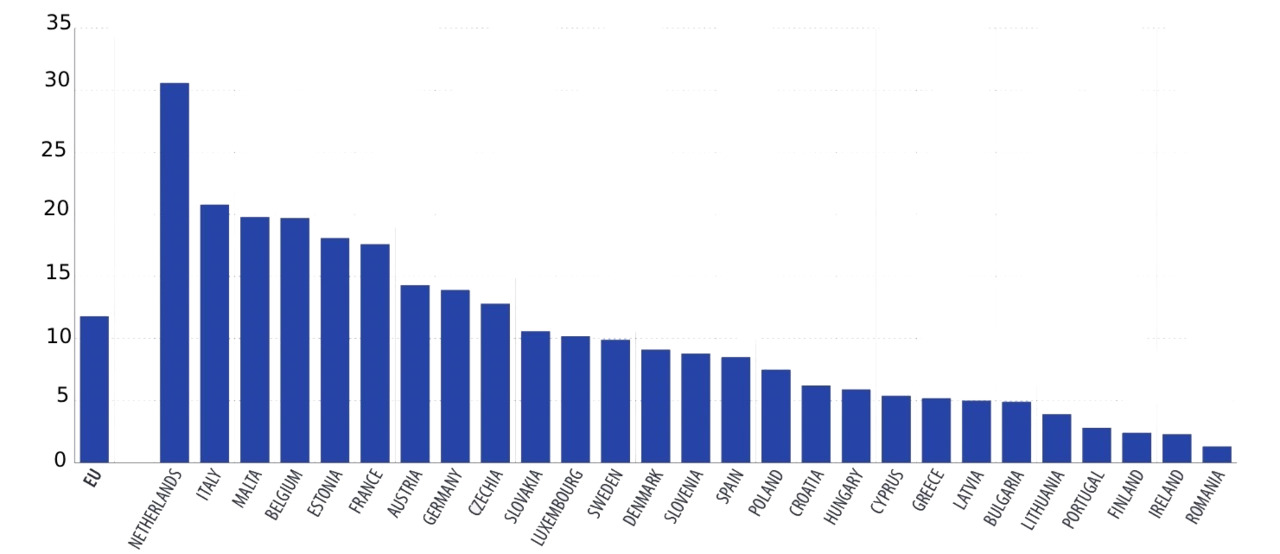
Figure 8. Circular material use rate in the EU, 2023, % [30]
The CE impacts a wide range of industries. In manufacturing, active development is taking place in the recycling programs of rare earth metals and other critical resources, which reduces dependence on imports. Another target has been the construction industry: construction waste is being recycled, and the use of secondary concrete and steel reduces the carbon footprint [31]. The textile industry has been implementing take-back and recycling programs for clothes, shifting to the use of recycled materials. Biofertilizers made from organic waste are also being introduced into agriculture, reducing the use of chemical fertilizers. The transport sector is actively developing battery recycling for electric vehicles, while energy produces recyclable components of solar panels and wind turbines. The packaging industry is focused on introducing reusable solutions, systems for collecting plastic, paper, and glass.
Accelerators that will help speed up the transition to a CE in the EU include different legislative initiatives, investments, and political programs. Among them, the well-known legal accelerator is the CE Action Plan presented by the European Commission in 2020.
Among the investments, Horizon Europe has to be highlighted; the program allocates considerable financial means to research and development of the CE, including recycling, batteries, building materials, and textiles. The estimated budget of this program for financing from 2021 to 2027 is €93,5 billion.
However, despite these accelerators, there are several barriers that slow down the transition to a CE [32]. Among the legal barriers, complex bureaucratic procedures related to waste recycling stand out. For example, differences in legislation between EU member states create obstacles for cross-border cooperation in waste management. Some countries face insufficient coordination between authorities, making it difficult to implement unified standards.
The infrastructure issues remain one of the big barriers: In numerous EU countries-especially Southern and Eastern Europe-the recycling infrastructure for such waste remains underdeveloped. Due to the limited amount of recycling plants and lack of modern landfills, an imbalance between different regions will hamper CE ambitions.
Transitioning to a CE generates major economic benefits in the EU. This transition impacts some of the main economic aspects: reducing the dependency on imported resources, creating new job opportunities, stimulating innovation, and reducing the waste and environmental pollution costs. All of these factors impact positively the economy of the region long-term and set up a sustainable basis for growth (table 1).
Table 1. Economic benefits and long-term impact of the transition to a CE in the EU
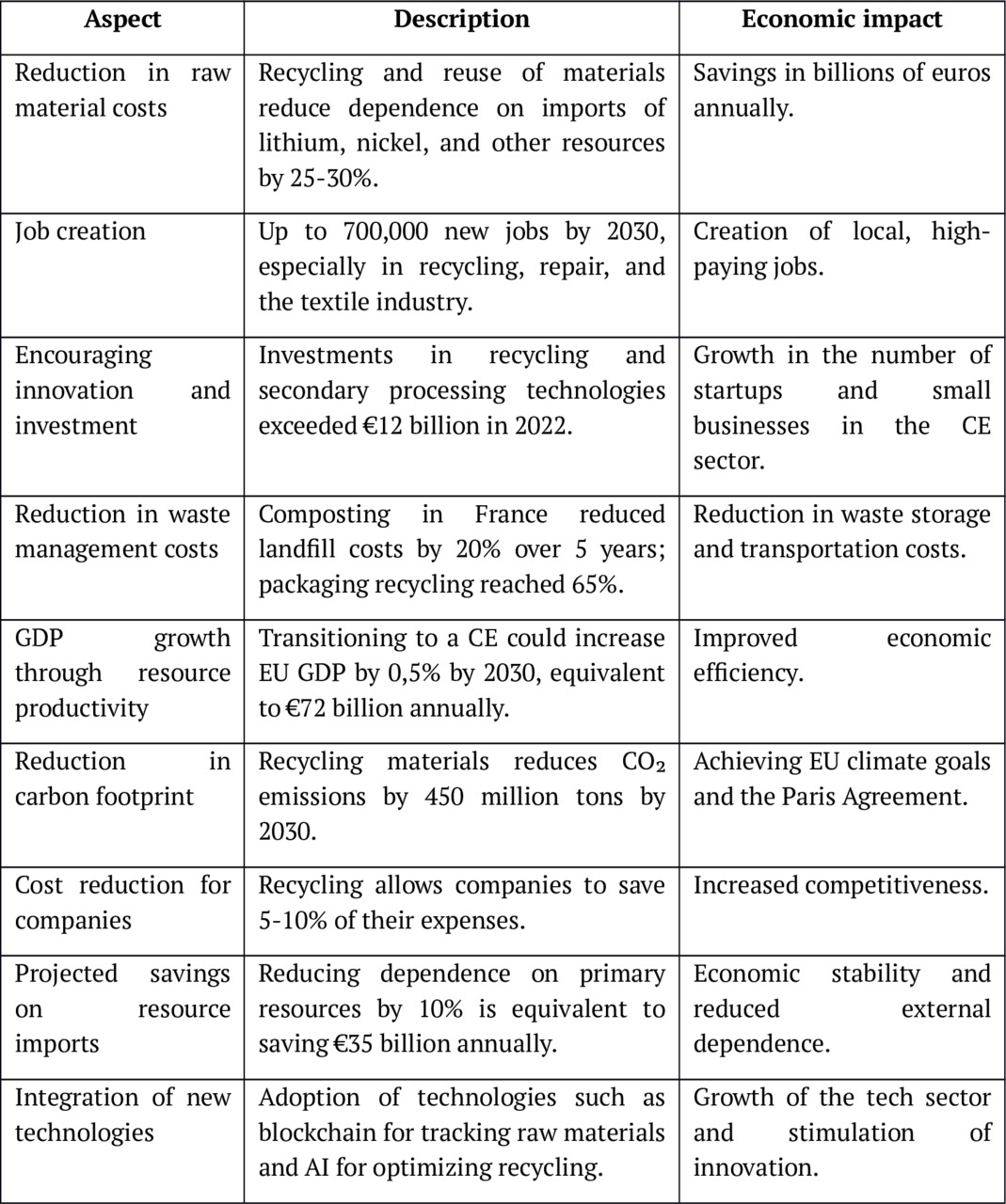
Technological bottlenecks are linked to the insufficient maturity of the recycling technologies of specific materials such as composite plastics, lithium-ion batteries, and textile fibers. The other challenge is related to a lack of awareness and low consumer engagement. Insufficient information on the importance of recycling and reusing materials among some EU citizens reduces the effectiveness of CE programs at the level of a household.
1.2.1. Estonia
Estonia is one of the most progressive countries in Northern Europe regarding sustainable development and environmental care. Due to its advanced digital infrastructure, high level of citizen engagement in environmental issues, and innovations that are being actively supported, Estonia has succeeded in building a green economy. In the last years, the country is also actively developing a CE, what is reflected in its legislative and economic initiatives. In 2024, Estonia received the highest rating in the EPI and confirmed its leadership in environmental governance (table 2).
Table 2. EPI Index [21]

Among the initial steps in transitioning to the CE was the adoption in 2014 of the Estonian Sustainable Development Strategy, which provided goals for switching from the linear to the circular economic model. In 2017, the CE Action Plan was approved, stipulating goals for the recycling and reuse of materials [33]. One of the biggest undertakings was the incorporation of necessary recycling levels for plastics and other materials within the law, adding tax credits for companies already seriously investing in sustainable production methods.
Laws and legislative developments form a very important part in promoting the CE. First of all, the so-called Waste Recycling Act has regulated the process of separation and further processing of garbage [34]. In 2019, Estonia also adopted the CE Act, which requires companies to use recycled materials and develop products with consideration for their future recyclability or reuse. These laws support the mandatory recycling of plastics, paper, glass, and other materials, while also encouraging the adoption of green technologies.
Over the years, the Estonian waste collection industry has recorded a gradual annual turnover increase that is proportional to the rise in concern for environmental sustainability and material recycling [35]. Due to infrastructure development for recycling purposes and waste processing technologies, the performance has been promising for years (fig.9).
However, the greatest challenge Estonia faces at present is meeting the set target by the EU in regard to waste recycling. Currently, the country is significantly behind the level of household waste recycling required and may face relevant penalties by the EU. By 2025, Estonia is bound to recycle at least 55% of household waste, but the current rate of recycling stands at only 33% of greenhouse gas emissions and promote the closed-loop cycle of energy production. It has a strategic plan for changing to 100% RE by 2030.
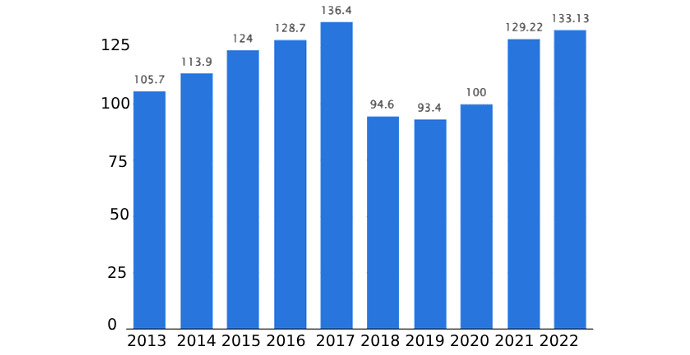
Figure 9. Annual turnover of the waste collection industry in Estonia from 2013 to 2022, million euros [36]
In the field of energy, Estonia emphasizes the development of RE sources. In 2022, more than 40% of the produced electricity came from renewable sources, including biomass and wind power plants. Waste-to-energy technologies, such as biogas plants that convert organic waste into biogas, are in active use. Such technologies contribute to the reduction.
This has a counterpart among the industrial companies in Estonia, with a bright example being Enefit Green, active in industrial waste usage for biomass and RE production. In 2023, the company was recycling organic waste in remarkable volumes that contributed to considerably lowering the environmental footprint of its production and improving circularity metrics.
Meanwhile, Estonian companies and startups also have contributions in regard to CE solutions. As one example, Polymer Deka has focused on the recycling of plastic waste; a developed technology allows converting plastic waste into new construction materials that make production with a low carbon footprint. EcoTree is another such startup processing wood waste to make environmentally friendly construction materials.
Education and public awareness help further the CE within Estonia. In 2021, the National Environmental Education Plan was adopted, also including programs of citizens’ and entrepreneurs’ education on principles of sustainable consumption and waste management. The initiatives also include waste separation campaigns, as well as educational programs for raising the level of awareness about the CE principles.
Thus, Estonia illustrates successful integration of the CE at all levels, from government policies to corporate initiatives. Implementation of environmental innovations, increase in recycling rates, and sustainable consumption, together with active engagement of citizens, enables the country not only to hold high positions in environmental sustainability rankings but also to contribute substantially to the global struggle against climate change. However, meeting the overall sustainable development targets set by the EU remains an ongoing task.
1.2.2. Switzerland
Switzerland is one of the world leaders in the field of CE, showing very high indexes of waste recycling, use of resources in a friendly to environment way, and implementation of newest technologies [37]. This is a small but highly developed country that actively applies the comprehensive approach based on strict legislation, state support, and ecological consciousness of the population. The EPI reached 100 in 2024 for the waste recycling rate, which means that Switzerland’s waste management system is truly effective and corresponds to the highest international standards.
Switzerland started creating the very foundation of its CE back in the 1980s when the first laws aimed at waste minimization and recycling were introduced. A key step was the adoption of the 1983 Environmental Protection Act, which set strict standards for the handling of household, industrial, and hazardous waste. In 2001, the Waste Disposal Act came into effect, effectively banning the burial of unsorted waste. All waste must be either recycled or sent for energy recovery. These legislative measures, based on modern technologies, presupposed the recycling of domestic waste and the reprocessing of the rest by heat, which practically excluded the use of landfills.
Switzerland possesses probably the most effective system of separating garbage in the world. In the country, citizens are obliged to sort garbage, separating paper, glass, plastic, metals, and organic waste, which are then sent to recycling [38]. The glass recycling rate reaches 95%, the plastic packaging is recycled at a rate of 82%, and the recycling rate for aluminum and steel is over 90%. Organic waste makes up a large part of recyclable waste, and half of it is utilized in the production of biogas and compost, which diminishes greenhouse gas emissions and encourages local agriculture.
The high rate of success in Switzerland is also based on active public involvement. Education in Switzerland starts at the elementary school level, where principles of waste separation and sustainable consumption are taught to children. The active adult population supports all environmental initiatives, taking an active part in recycling programs and choosing products in an environmentally friendly way. Such a culture contributes not only to a high rate of recycling but also to the development of the market of recycled materials.
Real estate in Switzerland plays a significant role in the country’s sustainable economy, with environmental aspects becoming an integral part of property management. Sustainability principles are being actively implemented throughout all stages of a building’s life cycle, from design and construction to operation and renovation. Zurich Invest, one of the leading players in the real estate market, underlines the importance of eco-friendly solutions with a focus on energy efficiency, reduction of CO₂ emissions, and minimization of resource consumption.
One of the main strategies is building and managing buildings that meet the Minergie standards and other environmental certifications. These would reduce the energy consumption of buildings through modern insulation technologies, energy-efficient heating and cooling systems, and integration of RE sources such as solar panels. More than one-third of the global demand for energy and about 40% of the CO2 emissions can be traced to buildings. In Switzerland, buildings produce 26% of greenhouse gas emissions. According to Zurich Invest, 95% of their portfolio in real estate has already been certified according to ecological standards or is under consideration for it; this again attests to the commitment towards sustainable development.
Moreover, special attention is drawn to the renovation of old buildings by substantially enhancing energy efficiency. New projects involve eco-friendly materials to reduce not only carbon footprint but also to maintain a healthy living environment.
Green areas also need to be integrated into the development. Green roofs, urban gardens, and rainwater collection systems not only clean the air but also ease the burden on city infrastructure, adding to climate change adaptation. These measures contribute to the CE by supporting a closed-loop system of resource use.
Zurich Invest’s global goal is to achieve climate-neutral real estate construction by 2050 and reduce greenhouse gas emissions by 30% by 2030 (fig.10).
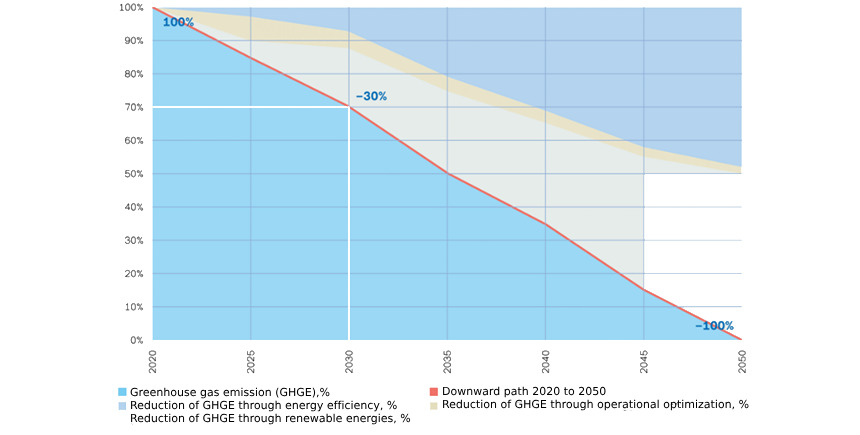
Figure 10. Zurich invest’s strategy for reducing carbon footprint [39]
Thus, Switzerland demonstrates how real estate can become a driver of sustainable development by minimizing environmental impact and improving quality of life. Examples such as Zurich Invest show that environmental approaches in property management not only contribute to environmental protection but also represent economically advantageous solutions, creating value for both owners and society as a whole.
Switzerland is one of the leading countries in the CE, and such success may be attributed to several important factors. First, the achievements of Switzerland are driven by its very developed recycling infrastructure. That country invests heavily in cutting-edge technologies and infrastructure projects for the purpose of reusing materials after recycling them as effectively as possible. The scope of waste recycling in Switzerland is rather broad, as it covers construction debris and even components of old electronic equipment. This full-cycle approach reduces reliance on imported raw materials and reinforces the local economy.
The success of a CE in Switzerland finds its foundation in a profound tradition of public awareness and environmental responsibility: the Swiss are very aware of and involved in all aspects of waste sorting and recycling, which significantly increases their recycling rate and reduces their landfills. This perspective on sustainable consumption cuts through every stratum of society, from young schoolchildren to adults, and this guarantees the good implementation of every governmental environmental policy.
Besides, Switzerland has an extensive government support system through financial and tax incentives that encourage corporate activity for sustainability. Government-subsidized programs for encouraging innovation in the environmental field are given significant support so that companies can adopt advanced technologies and methods of material recycling. Such subsidies include companies that specialize in plastic recycling or firms that invest in ecological construction technologies.
The interplay of effective recycling infrastructure, a highly environmentally conscious populace, government support, and business enterprise thus turns Switzerland into a global example of how to transition towards a CE.
1.2.3. Germany
Germany, as the representative of the EU countries with developed economy, is among the forerunners of implementing CE principles. During the late 20th century, this very concept started to actively evolve due to the first legal laws aimed at waste minimization and efficient resource use. A key step in this process was the Packaging Waste Act of 1991, which required producers to take responsibility for the collection and recycling of packaging materials [40]. This approach formed the basis for the EPR principle. In 1996, the Closed Loop Waste Management and Disposal Act was passed, giving a legal form to the concept of the CE and setting priorities: avoidance of waste, re-use, recycling, and disposal as the very last option.
Today, Germany boasts probably one of the most demanding ecological regulatory systems in the world. The revised Closed Loop Waste Act, which started its implementation in 2012, set more stringent demands on sorting and recycling for all kinds of waste, organic and industrial alike. In 2019, the Packaging Act was passed, expanding producer obligations and setting minimum recycling standards, such as 63% for plastics in 2023. These initiatives are part of the National Sustainable Development Strategy, which is included in the EU’s CE Action Plan [41]. Starting in 2025, new rules for waste separation will be introduced in Germany. People who put foreign objects in organic waste containers will now be fined up to €2,500.
The CE covers almost all the most important sectors of the German economy. More than 67% of household waste is recycled in the waste recycling sector, which is one of the highest rates in the EU. Industrial enterprises, like BASF, introduce closed carbon cycle technologies, reprocessing by-products of production to obtain new products. In the last years, due to such actions, CO2 emissions have been decreasing (fig. 11).
In the energy sector, Germany is actively developing biogas plants that process organic waste. In 2023, RE sources accounted for 55% of the electric power produced in Germany, of which 8,4% came from biomass, including biogas. In the construction industry, more than 90% of construction waste is recycled or reused, and new building materials are designed with consideration for their subsequent recycling.

Figure 11. CO2 emissions by BASF, metric tons [42]
The automotive industry, particularly BMW, actively uses recycled materials such as aluminum and plastic in the production of new vehicles. Starting in 2025, the Neue Klasse models will feature plastic trim parts, 30% of the raw material for which will come from marine plastic waste [43]. The carbon footprint of these components will be approximately 25% lower than that of corresponding components made from conventional plastics. BMW also uses recycled fishing nets to make fabrics for ceiling panels and floor mats in the BMW i3, BMW iX, and other models. The BMW Group has set an overall goal to increase the share of secondary materials in thermoplastics used in new cars, from approximately 20% at present to an average of 40% by 2030.
Germany has achieved significant success in the development of the CE through a comprehensive approach that combines strict environmental laws, innovation, and a high level of environmental awareness among its population [44]. The country aims to achieve carbon neutrality by 2045, with intermediate targets for reducing greenhouse gas emissions: a 65% reduction by 2030 and an 88% reduction by 2040 compared to 1990 levels. As mentioned, one of the most important aspects was the early legislative framework regarding Closed Loop Waste Management that established a waste management hierarchy, emphasizing prevention, recycling, and reuse. Germany is actively implementing technologies in sectors such as waste recycling, energy, and industry. High waste separation was able to occur with modern infrastructures such as recycling plants and waste separation systems. Innovation supports the effective re-creation of materials from waste, such as plastic wastes recycled for new material use and organic waste used for the production of biogas. Additionally, environmental education and public awareness encourage active citizen participation in implementing the principles of the CE, making Germany a leader in this field.
1.2.4. Netherlands
The Netherlands is considered one of the forerunners in the world regarding the CE due to its ambitious strategy and integration of sustainable principles into key sectors of the economy. In 2016, the country adopted the Circular Netherlands by 2050 program with the aim of full transition to a CE and excluding the use of primary fossil, metallurgical, and mineral resources [45]. A second, intermediate goal is to reduce the consumption of these resources by 50% by 2030. This strategy relies on close collaboration between the government, business, academia, and citizens, allowing for the development of inclusive and scalable solutions.
In the Netherlands, the National Program for CE 2023—2030 was adopted. It encompasses a broad area, including reduction in primary resources, material recycling, prolonging the useful life of products, and substitution of secondary and bio-based materials. One of the critical components of the program pertains to improving recycling processes to make use of resources efficiently, especially within priority sectors like consumer goods, building materials, plastics, and agriculture. The program also includes international cooperation to make the transition equitable, such as on environmental standards and improving labor conditions along the value chain [46]. It also sets out a package of incentivizing and regulatory measures for reaching the objectives on reducing CO₂ emissions and increasing the resilience of the Dutch economy. According to reports, a number of challenges are said to face the national CE program for 2023—2030, including limited budgetary resources (fig.12).
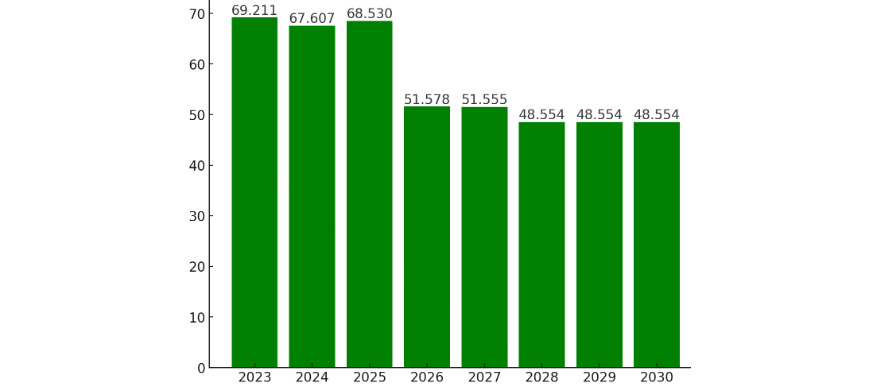
Figure 12. Financing of the CE in the Netherlands, thousand euros
Among the major drivers of CE development in the country is high population density and lack of natural resources-a factor that makes efficient material use vitally important. Waste recycling systems are actively being developed in the country, and among the priorities are organic, construction, and plastic waste. This has been made possible through a strictly regulated waste segregation system and the implementation of innovative recycling technologies [47]. For example, construction waste recycling allows the production of high-quality secondary materials, which are used in road construction and the housing sector.
The Netherlands is also at the forefront of plastic recycling. The country is part of the Plastic Pact NL initiative, under which the goal is to have 100% of the packaging made of recyclable plastic by 2025 [48]. Further, innovative projects like chemical recycling plants are making complicated types of plastics into raw materials for the manufacture of new materials. These technologies substantially reduce dependence on primary plastics and reduce the carbon footprint of the industry.
Agriculture also contributes importantly to the CE of the Netherlands. Recycling organic waste, like manure and agricultural residues, into biogas and compost, which are used as fuel and fertilizers, respectively. Furthermore, initiatives on vertical farming and aquaponics methods are underway, limiting the use of water and soil while generating a more sustainable food value chain.
Dutch industry is embracing circular models, like the recycling of metal waste. Several eco-industrial parks have been created in the country’s largest industrial and logistics center, the port of Rotterdam, in which one company’s waste serves as a resource for another. This helps minimize the amount of waste generated along with lowering CO₂ emissions. One successful example includes a carbon recycling program that transforms carbon emissions into chemical products and construction materials.
The Netherlands is also heavily investing in education and research initiatives. Universities and research centers such as Delft University of Technology play a key role in developing new technologies and training specialists in sustainable development. Support programs for startups and innovative companies help implement circular solutions in small and medium-sized enterprises. For instance, the Amsterdam-based platform Circle Economy provides companies with tools to transition to closed-loop production models.
International cooperation is a key factor in the success of the Netherlands. The country actively participates in European and global initiatives for the CE, thus enabling it to attract investment and share best practices with other countries. That is why the Netherlands has been called a “living laboratory” of the CE: it can scale up innovative solutions and integrate them into the real economy.
Despite active promotion of the CE, the introduction of RE in the Netherlands has been burdened with a number of serious problems for quite a long time. The first important problem concerns slow sector development in comparison with many other EU countries. In 2015, the proportion of RE in the country’s overall energy balance equaled just 5,8%, the lowest index among all the EU nations. Whereas, in 2022, the Netherlands got only 15% of its consumption of energy from renewable sources [49]. The reason for this lag is explained by the heavy dependence on natural gas from the large Groningen field and the absence of sufficient government incentives.
Key barriers included constrained investments in wind and solar energy, lack of infrastructure to integrate RE, and high technology costs at an early stage of their deployment. Besides, the densely populated country with limited land made it complicated to construct large RE generation facilities. The low level of RE consumption can also be partly explained by the generally flat and often below-water terrain that results in a limited availability of hydroelectric resources.
In the long run, the Netherlands wants to be a fully CE: waste is to be transformed into resources, with as little environmental impact as possible, while the economy remains competitive and sustainable. These measures will not only improve the state of the environment but also reinforce the country’s position as one of the leaders in innovation and sustainable development worldwide.
1.3. Australia
The Australian experience in transitioning to a CE is unique and interesting, underpinned by the geographical position, natural resources, and socio-economic aspects. Australia is the biggest island continent in the world, with immense natural resource deposits, and at the same time faces challenges associated with their rational use. Being far away from key global markets, having partial infrastructural development in some parts, and having high environmental risks related to climate change, the transition to the CE is not just an ecological but also an economic necessity [50].
Australia is also particularly well-placed to achieve a CE transition due to its sound research base, technological capabilities, and government support. In 2021, the Australian government adopted the National Waste Policy Action Plan, which has set ambitious goals in terms of reduction of the waste produced by the commercial sector (fig.13).

Figure 13. The amount of solid household waste produced by the commercial sector, tons per capita [51]
Natural resources are of great importance to the Australian economy. Australia is one of the major exporters of metals, coal, and gas. However, overexploitation of these resources has created several problems, such as resource depletion and increased carbon emissions. In this context, the CE is a strategy that could ensure long-term economic sustainability by minimizing waste, recycling materials, and reusing raw materials.
Initiatives towards waste reduction include the elimination of single-use plastics. Because Australia has imposed strict regulations concerning the manufacturing and consumption of various single-use plastic products since 2022, this initiative will eventually reduce the volume of plastics landfilled substantially, triggering further development in the capacity to recycle plastic wastes, including chemical recycling facilities and the development of biodegradable materials by the year 2024.
Furthermore, Australia is actively implementing programs of organic waste recycling. It has introduced composting systems at both the family and community levels that help diminish methane emissions to the atmosphere from landfills. Until 2024, more than 50% of organic waste will be recycled in Australia, placing the country among the leaders of developed economies on this indicator [52].
An interesting aspect involves the mining industry in applying the principles of the CE. Companies dealing with extraction, including but not limited to iron, lithium, and rare earth elements, started installing waste recycling systems into their production cycles. For instance, Lynas Rare Earths involved in extracting and processing rare earth metals implemented the use of reagents’ recycling in their technological cycles, which decreases water usage and reduces industrial waste significantly. They also have projects on ecosystem restoration in mined areas.
Despite these successes, Australia is also experiencing various challenges in the implementation of a CE. Among these is the disparate waste recycling infrastructure between urban and rural areas. Many remote regions, like deserts and thinly populated areas, are devoid of recycling facilities and logistic solutions that would provide opportunities for material reuse, which results in increasing the costs of waste transportation.
Technological challenges also play a significant role. For example, recycling complex materials like lithium-ion batteries and composite plastics requires substantial investments in research and development. Furthermore, recycling technologies remain expensive, which slows their large-scale implementation.
The social aspect of the transition to a CE needs attention, too. Though Australians are increasingly aware of the importance of recycling and material reuse, in some parts of the country this is still inadequate. This is especially true in rural areas, where cultural and economic barriers often stand in the way of active participation in recycling initiatives.
Investments also play an important role in the implementation of the CE in Australia. The government invested in the year 2023 approximately AUD 1,5 billion for projects of waste recycling, creation of closed supply chains, and the development of technologies of secondary usage [53]. These investments will be channeled into a sustainable infrastructure that would see Australia achieve its CE goals by 2030. Examples include the building of plastic waste recycling plants in the states of Victoria and New South Wales, which created hundreds of new jobs.
In 2024, nine districts in South-East Australia pledged to divert at least 95% of their waste to energy recovery plants and not to landfills over the coming 25 years. These are in response to the forecasted increase in landfills in this region by 40% by 2046. Waste would be used to generate energy instead of landfilling it, thereby reducing the amount of greenhouse gas emissions. For each ton of waste recycled, 0.8 tons of emissions are saved. This will reduce 270,000 tons of emissions every year, which equals taking 50,000 cars off the road. More than 500 temporary jobs will be created during the construction of the waste-to-energy plant and around 450 permanent jobs when it becomes operational [54].
Thus, Australia’s practice of transitioning towards the CE shows how one can use the specific geographical, social, and economic features of the region to turn to the models of sustainable development. The country, with government support, active investments, and business involvement, is moving confidently towards achieving the results of its CE, although many challenges have yet to be overcome. This experience can serve as a model for other developed economies that strive to create a more sustainable and resource-efficient development model.
1.4. Canada
Canada, with its rich natural resources and developed industry, is well aware of the need to switch to a CE in order to achieve sustainable development and increase competitiveness. In this respect, the major drivers for the transition are environmental problems linked to increased volumes of waste and their negative impacts on the environment [55]. The CE contributes to minimizing pollution and optimizing resource use. The second significant point refers to economic efficiency, which will be promoted by using secondary materials and waste recycling to decrease raw material costs and dependency on imports. Such aspects of social importance as creation of new jobs in recycling and ecological manufacturing contribute to the improvement of quality of life and development of local communities.
The country of Canada is carrying out the transition to a CE through the establishment of recycling infrastructure, introducing production technologies using minimal waste, and raising public awareness. That is, the construction of new recycling facilities, especially those involved in processing plastics, metals, and organic waste, is to be supported, along with the encouragement of companies to make goods with longer lifespans and with potential for reuse. Key sectors where such changes are taking place include industrial manufacturing, which is introducing closed-loop material cycles, construction that actively uses recycled materials, and agriculture with the application of composting for organic waste reuse.
Another unique feature of the Canadian way is the emphasis on energy-efficient homes. Because of the northern climate, Canadian homes use a lot of energy. The home and building sectors account for 13% of Canada’s greenhouse gas emissions. This figure increases to 18% when electricity is used for cooling, lighting, and household appliances. To this end, the government has pledged to spend $2,6 billion over seven years starting from 2020—2021 to support homeowners in improving the energy efficiency of their homes. Up to 700,000 grants of up to $5,000 are also being provided to support households make energy-efficient changes to their homes.
The transition to the CE brings tremendous economic benefits. According to Efficiency Canada, in 2018, more than 436,000 jobs related to energy efficiency were created yearly, at an annual growth rate projection of 8% year on year [56]. Between 2017 and 2030, energy efficiency measures would raise British Columbia’s average yearly GDP by $3,8 billion and create an average annual of 18,300 jobs. In Saskatchewan, an average of 3,400 jobs will be created annually, and GDP will increase by an average of $800 million per year. In Ontario, GDP will increase by an average of $12,5 billion, with 52,900 jobs created annually, and in PEI, GDP will rise by $200 million, with 1,500 new jobs.
A reduction in the volume going into landfills reduces waste management and storage costs, thereby improving economic benefits. For instance, closed-loop recycling cycles at mines enable the reutilization of by-products and reduce environmental costs, thus giving the economy more resilience.
Some accelerators help Canada move toward the CE. Legal actions like adopting laws that promote recycling. In 2016, the national program framework was built, which included detailed measures to reduce carbon dioxide emissions, and these are foreseen to be reduced by 227 million tons until the year 2030. Investments by public and private sectors in recycling infrastructure and innovative technologies facilitate this acceleration of changes. It is expected that in the coming years there will be an increase in the number of jobs in the clean economy in Canada (fig.14).
Бесплатный фрагмент закончился.
Купите книгу, чтобы продолжить чтение.
